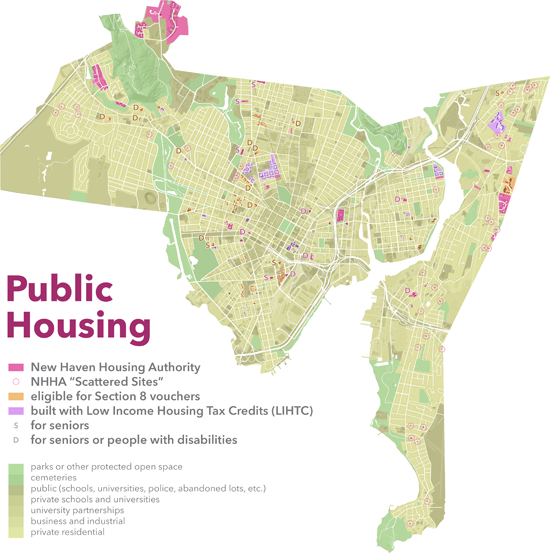
Bill Rankin, 2012
download:
.PNG (2.9 MB)
The phrase "public housing" typically brings to mind images of St. Louis's Pruitt Igoe development, Chicago's Henry Horner Homes, or, in New Haven, the Elm Haven projects. But in the last few decades, both the appearance and the legal mechanisms of public housing have changed dramatically. Instead of large highrises built, owned, and operated by municipalities, programs like Section 8 and the Low-Income Housing Tax Credit (LIHTC) have led to a complexly hybrid public/private system.
What this means is that it's increasingly difficult to draw a sharp distinction between "the projects" and private housing. Public housing doesn't have a distinctive architectural presence in the city, and searching tax records or looking at the Housing Authority website only shows a fraction of the programs in place. Given the terrible conditions and social stigma associated with modernist housing blocks, this is almost certainly a good thing, but we shouldn't then conclude that public housing in general was a "failed experiment" of the misguided welfare state. Instead, we should think about the different ways that the government can act, with concrete tower blocks being only one possibility among many.
